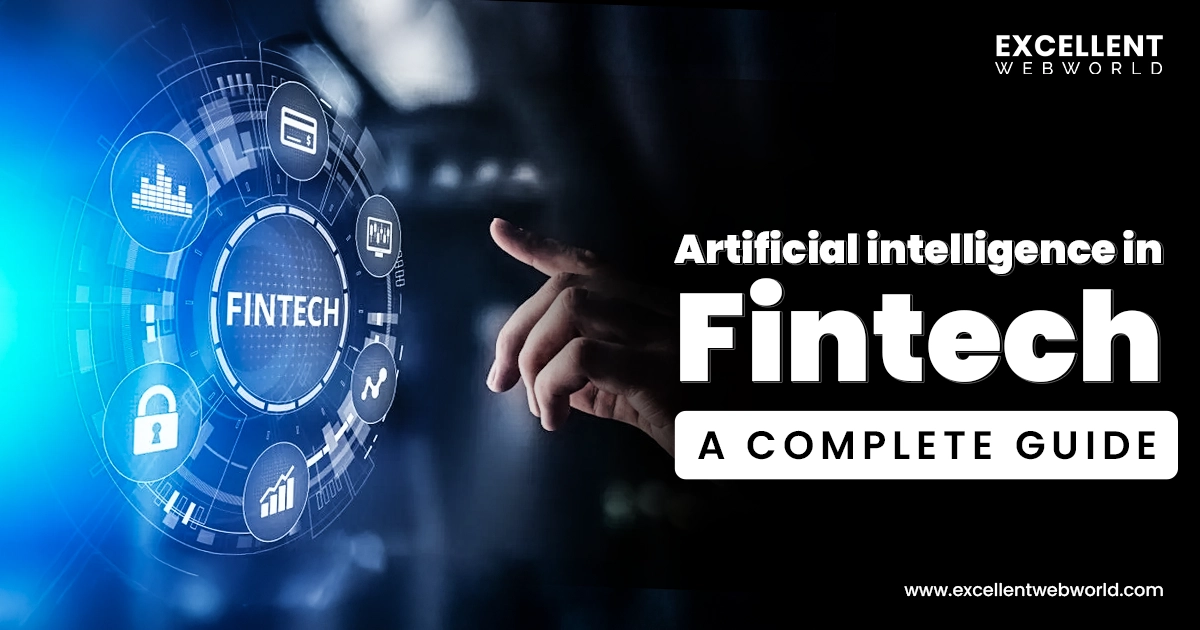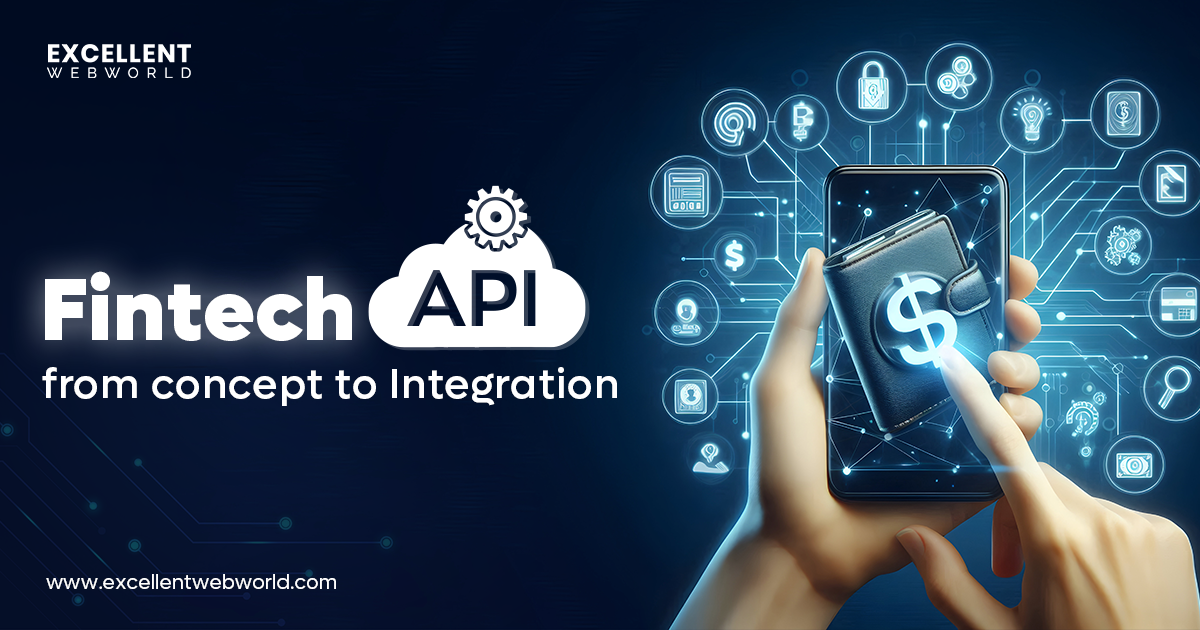Why Is Payment Gateway Development Worth Your Attention?
The significance of a payment gateway in the digital economy is becoming strong, as it focuses on secure and efficient business transactions. It provides strategic information on how to develop a payment gateway solution, including types available, tech stack selection, ensuring compliance, and security implementation. Additionally, it discusses the cost of payment gateway development & maintenance, highlighting the benefits of creating custom payment solutions.
Did you know the global digital payments market is projected to reach USD 15 trillion in 2025? With a CAGR of 15.90%, it is projected to reach USD 36.75 trillion by 2029 (Source: Statista). Most businesses are increasingly shifting to online transactions, which increases the need for secure & efficient payment solutions. This historical change creates a huge opportunity for custom payment gateway development.
Instead of relying on third-party gateways like PayPal or Stripe, developing a payment gateway of your own offers cost savings, greater security, and full control over transactions. Especially for those businesses that have to handle high volumes of payments on a regular basis. However, developing a payment gateway is complex and involves multiple layers of security protocols, compliance, and technical expertise.
So, are you wondering how to build a payment gateway solution for your business? From core development process to estimated costs & timelines, we will help you decide whether a custom payment gateway is the right investment.
By the end of this guide, you’ll have a complete roadmap to building a secure, compliant, and scalable payment gateway solution tailored to your business needs. Although, let’s start by learning what a payment gateway is.
What Are Payment Gateways and Payment Processors?
Understanding payment gateway and payment processor systems is crucial for e-commerce businesses, SaaS platforms, and marketplaces considering a custom payment solution.
A payment gateway is software that acts as a “middleman” between customers and retailers. It enables online transactions and securely deposits money into the merchant account. The gateway also sends sensitive client data to payment processing partners. In contrast, a payment processor handles the technical side of a transaction, moving funds between the customer’s bank and the merchant’s account.
Payment gateway software exists in both physical and digital forms. A physical payment gateway is the POS system software you see at retail stores, while a digital payment gateway is used for online and mobile transactions in e-commerce businesses and apps.
Moreover, payment gateway technology performs functions beyond data transmission. Initially, the system confirms that there are enough funds on the customer’s card. The payment gateway software communicates with the merchant, customer, issuing bank, acquiring bank, and payment processor, ensuring that the payment request is authenticated and processed securely. It also checks the digital wallet or other payment methods, which, from the user’s perspective, is the final step after they learn how to create a digital wallet and link it to a funding source.
Next, it employs encryption technology for added security. The payment gateway system must comply with PCI DSS regulations and include fraud detection measures to protect private data & transactions. These features are essential for safeguarding customers. They help prevent customers from losing money.
How Does a Payment Gateway Work?
Before building a payment gateway, it’s crucial to understand its role in processing transactions. Payment gateway software is a bridge between merchants, customers, payment processors, and banks. It ensures secure, fast, and reliable payment transactions for both parties. The payment gateway setup encrypts payment details, verifies transaction legitimacy, and facilitates fund transfers between the customer’s and merchant’s bank accounts.
Here is a step-by-step breakdown of how a payment gateway processes transactions:
1. Customer Initiates the Payment
2. Payment Gateway Sends Data to the Merchant’s Server
3. Merchant Server Forwards Data to the Payment Processor
4. Authorization Request via Issuing Bank
5. Transaction Approval or Decline
6. Funds Settlement & Transaction Finalization
7. Payment Confirmation & Receipts
By understanding these steps, businesses and developers can create a better experience. This ensures a smooth, secure, and efficient payment flow, which is crucial when developing a payment gateway tailored to specific needs.
Recommended: How to Build a Peer-to-Peer Payment App Like Zelle & Venmo?
What Are The Different Types of Payment Gateways?
When building a payment gateway solution for your business, it’s crucial to understand the different types. Every type of payment gateway has a distinct function and set of capabilities. These features impact transaction efficiency, security, and user experience.
Choosing the right gateway depends on your business goals. Are you focused on cost-effectiveness, convenience, or customization? Understanding the distinctions will help you make an informed choice. You can also work with a payment gateway developer to fine-tune your solution.
| Payment Gateway Type | Description | Payment Gateway Examples |
|---|---|---|
| Hosted Payment Gateways | Simply redirect customers to a third-party page for payment processing, ensuring security but adding extra steps. The payment gateway integration cost for hosted gateways tends to be lower. This is because the provider handles most of the technical aspects. | |
| Self-Hosted Payment Gateways | Merchants collect payment details on their site and send them to the gateway for processing, providing more control. | |
| API-Based or Non-Hosted Payment Gateways | API development and integration-based gateways provide retailers with total command over the payment procedure. These are fully integrated online payment API into websites and apps, allowing seamless checkout without redirection. | |
| Local Bank Payment Gateways | Offered by banks, these local bank gateways allow direct integration with merchant accounts. It helps them cater to local customers who trust their financial institutions. | |
| Cryptocurrency Payment Gateways | Instead of regular currencies, it allows businesses to accept payments in Bitcoin, Ethereum, and other cryptocurrencies. | |
| Buy Now, Pay Later (BNPL) Gateways | As the name suggests, this BNPL gateway doesn’t force full payments. It will let customers split payments into installments, increasing affordability. | |
| Mobile Payment Gateways | Specifically designed for transactions happening from mobile phones. It supports QR codes and mobile wallets. | |
| Subscription-Based Payment Gateways | Specializing in recurring billing for SaaS, memberships, and subscription-based businesses. | |
| Multi-Currency Payment Gateways | More than one currency transaction is supported, which makes them ideal for global businesses. | |
| Contactless/NFC Payment Gateways | Facilitate contactless transactions using NFC technology. It allows users to pay by tapping their smartphones or cards (NFC-enabled devices) on a compatible terminal. | |
| White-Label Payment Gateways | The payment gateway setup is of another brand but allows businesses to rebrand and customize the gateway under their own brand. It’s like giving branding to ready-to-use payment gateways. | |
| Marketplace Payment Gateways | Designed for multi-vendor marketplaces. It also manages split transactions between different sellers. | |
| Offline Payment Gateways | These payment gateways can run without an internet connection. It supports offline transactions that sync when the device is reconnected to the internet. | |
| High-Risk Payment Gateways | Mostly used for high-risk business industries. For instance, gaming, adult content, and forex trading. |
How to Create Payment Gateway? 8 Easy Steps to Develop Yours
Building a payment gateway involves understanding payment gateway technology. This includes grasping the complexities of processing financial transactions securely. As the use of digital payments grows, companies desire to develop their own payment gateway systems. They seek control, flexibility, and better user experiences.
Here, we’ll explore the essential steps of how to make a payment gateway. We’ll cover everything from the basics to the final implementation.
1. Understand the Basics of Payment Gateways
A payment gateway securely processes credit card transactions or bank information and encrypts it to protect sensitive data before sending it for online payment authorization. After encryption, the data is sent for validation. This step ensures a seamless transaction between the customer, merchant, payment processor, and bank.
The payment gateway software development can be self-hosted (managed on your servers) or cloud-based (hosted by third-party providers). You can choose a cloud-based gateway for easy compliance and scalability or while self-hosted gateway to control merchant payment processing.
2. Choose the Right Technology Stack
Selecting the right technology stack for payment gateway development is crucial for security, scalability, and performance. Commonly used back-end languages include Node.js, Python, or Java for server-side logic that should support high transaction volumes. On the other hand, front-end frameworks like React or Angular can help with user interfaces to ensure a seamless user experience.
For databases, consider secure options like PostgreSQL or MongoDB. Additionally, prioritize encryption standards and use libraries or SDKs that support PCI-DSS compliance to ensure data security during transactions.
Recommended Tech Stack for Payment Gateway
3. Compliance with Regulatory Standards
Compliance is one of the most critical aspects of building a payment gateway. You must adhere to global security standards.
Crucial Security Compliance for Payment Gateway Development
4. Implement Secure Transaction Handling
Security is the backbone of payment gateway development. To ensure security, you must incorporate various protocols. Ultimately, a well-secured payment gateway transaction flow minimizes risks, protects user data, and builds customer trust.
5. Integrate with Multiple Payment Methods
Multiple payment processing methods are supported by the current payment gateway technology, which is a major feature. This covers bank transactions, digital wallets, and credit cards. To ensure broad compatibility, you should integrate popular payment services like Visa, Mastercard, PayPal, Apple Pay, and Google Pay. You should also think about the region for which you’re creating your payment app. For example, if you’re creating your payment app for Saudi Arabia, you should integrate the top payment gateways in Saudi Arabia.
Offering multiple payment options increases customer flexibility and merchant payment processing efficiency. Let’s see prominent examples of payment processing options in the following table:
| Payment Processing Types | Examples |
|---|---|
| Credit & Debit Cards | Visa, Mastercard, American Express |
| Digital Wallets | PayPal, Apple Pay, Google Pay |
| Bank Transfers | ACH, SEPA, UPI |
| Cryptocurrency Payments | Bitcoin, Ethereum via BitPay or Coinbase Commerce |
| Buy Now, Pay Later (BNPL) | Klarna, Afterpay, Affirm |
6. Develop a User-Friendly Interface
A user-friendly interface (UI) is just as important as the backend of your payment gateway development. A quick and easy transaction process is made possible by an easy-to-use, straightforward design.
7. Perform Thorough Testing
Once the development process is complete, rigorous testing of the payment gateway technology is essential. This step helps identify and fix any bugs or security vulnerabilities. Ensuring reliability at this stage is crucial for the success of your payment gateway in a live environment. Key tests include:
| Types of Payment Gateway Development Testing | What’s the Role? |
|---|---|
| Unit Testing | To ensure each component functions correctly. |
| Integration Testing | This verifies how components work together. |
| Load Testing | To ensure your payment gateway handles high transaction volumes smoothly. |
| Security Audits | These audits verify the effectiveness of encryption protocols. It ensures compliance with PCI-DSS and fraud prevention in payment gateways. |
| Penetration Testing | In case you opt for external API development to ensure secure payment data transfer. |
8. Monitor and Maintain the Gateway
After launching, continuous monitoring and maintenance are crucial. You need to maintain your payment gateway technology regularly. This ensures it stays up-to-date and secure.
Best Practices to Monitor and Maintain Payment Gateway Setup
Now you may have all the answers to ‘how to create my own payment gateway.’ By following these steps, building a payment gateway becomes manageable. You can create payment gateway solution that is robust, secure, scalable, compliant, and can handle various payment needs in today’s digital economy. Remember, a proactive approach makes all the difference in the evolving payment processing landscape. Consistent attention leads to long-term success and reliability.
Payment Gateway Development Cost Breakdown
The payment gateway development cost varies based on several key factors. These include the system’s complexity, security features, and compliance requirements. The total cost is also largely determined by the integration capabilities.
***Please note that these are just the estimated average costs of payment gateway development; they vary depending on your requirements.
Updating security, keeping up with industry standards, and maintenance are additional recurring costs. Complying with PCI-DSS rules raises the price as well. The technology stack selection will significantly influence the overall budget. Different technologies come with varying costs. Each choice affects how much you spend. Let’s understand in the table format for your feasibility:
Payment Gateway Development Costs
| Factors Affecting Cost | Estimated Payment Gateway Development Cost Range |
|---|---|
| Security & Compliance (PCI-DSS, GDPR, PSD2) | Increases Overall Development Cost by 10-15% |
| Technology Stack | USD 10,000 to 30,000 |
| Third-Party Integrations (Banks, Payment Processors) | USD 5,000 to 15,000 |
| Development Team Cost | USD 20 to 120 Per Hour (varies by region) |
***Please note that these are just the estimated average costs of payment gateway development; they vary depending on your requirements.
Additional Maintenance & Compliance Costs
| Factors of Maintenance & Compliance Costs | Estimated Cost Range |
|---|---|
| Security Updates & Fraud Prevention | USD 5,000 to 20,000 Annually |
| Compliance Renewal (PCI-DSS, EMV 3DS, etc.) | USD 10,000+ |
| Ongoing Tech Support & Monitoring | 30% to 40% of Total Payment Gateway Development Cost (Varies by Provider) |
***Please note that these are just the estimated average costs of payment gateway development; they vary depending on your requirements.
Final Thoughts on Payment Gateway Development
Overall, payment gateway development is essential for businesses today. It allows for secure, scalable, and seamless digital transactions. As e-commerce and mobile payments grow, a reliable payment gateway becomes even more important. It enhances user experience while improving security. Plus, it gives businesses greater control over their payment gateway systems.
Building a custom payment gateway requires careful planning and execution. You need to understand the technology stack involved. Regulatory compliance is also crucial to consider. With the right approach, businesses can create payment gateway that supports multiple payment methods. It should integrate smoothly with various platforms and meet the highest security standards.
By following the above-mentioned steps on how to create your own payment gateway, you can create a robust solution. This payment gateway solution will be scalable and cater to modern consumers’ needs. Whether you are a startup or an established company, investing in a well-designed payment gateway can pay off. It opens new revenue streams and provides long-term benefits.
Excellent Webworld is recognized as one of the leading fintech app development company with 900+ successful projects over the last 13 years. We have experience building any type of app related to finance and payment gateway integration. Get in touch with us for more info!
FAQs – Payment Gateway Development
The payment gateway’s development process consists of a payment processor, merchant account, security protocols (SSL, PCI-DSS), and integration APIs to ensure seamless transactions.
Custom payment gateway development provides better control, branding, and lower transaction fees. On the other hand, third-party payment gateway solutions provide quick setup and compliance management.
Planning, choosing a technology stack, obtaining compliance certifications, integrating with banks, designing & developing a payment gateway, testing, and deployment are the key steps of the guide that explains how to build payment gateway.
Integration with the merchant’s website or app, API configuration, security testing, compliance verification, and live transaction testing are the key steps of payment gateway implementation.
As securing the user’s financial data is a crucial step in payment gateway development, the challenges are: security compliance, fraud prevention, regulatory approvals, seamless payment gateway integrations, and maintaining a high uptime.
Hire expert developers from experienced companies like Excellent Webword, ensure PCI-DSS compliance, integrate with banking networks, and develop a secure transaction processing system.
Yes, you can integrate multiple gateways that offer better payment flexibility and reliability for users.
Popular payment gateway options include Stripe, PayPal, Square, Razorpay, and Braintree.
Implementation can take 4-8 weeks for integration with existing payment gateway platforms. On the other hand, custom payment gateway development may take 6 to 11 months as per your business requirements.
The cost of creating a payment gateway ranges from USD 75,000 to 100,000+, depending on the features, security, and compliance requirements of your business.
Developing a payment gateway like Stripe may cost between USD 150,000 to 250,000 due to advanced security, compliance, and global transaction handling.
Look for experienced fintech developers with expertise in PCI-DSS compliance, API integrations, and secure payment processing. Connect with the top fintech development companies like Excellent Webworld.

Article By
Mahil Jasani began his career as a developer and progressed to become the COO of Excellent Webworld. He uses his technical experience to tackle any challenge that arises in any department, be it development, management, operations, or finance.





